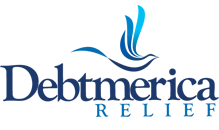Debt Relief – How to Find Help
What is Debt Relief?
Debt relief is defined as a partial or total forgiveness of debt. When the term is used by the government, it usually refers to the forgiveness of debt to underdeveloped countries. Recently, it has begun to refer to the millions of consumers who are overwhelmed with debt seeking financial relief from their unsecured debt. Whenever debt became too high in the past, home equity loans were used. Equity loans helped the homeowner rid themselves of high interest payments without damaging their credit score. Today, real estate values have declined to the point that the majority of homeowners have mortgages that are higher than their homes are worth.
What Debt Relief Options Are Available?
There are many types of debt relief programs. They each lower monthly payments for the consumer, but the way they are managed is different. Depending on the problems and nature of the debts, some of these programs will work better for some consumers than others. If you need help managing your debt, it is important to understand how each program works before making a decision. The results will impact your daily life as well as your credit report. The right program will help to reduce the level of financial hardship. A program that does not meet your needs may increase them. Some programs that provide debt relief require a large sum up front. Others lower the interest, but extend the length of time allowed to make the payments.
Is Bankruptcy The Best Option?
Most consumers want to avoid bankruptcy. Though it may be the appropriate solution for some, it involves attorney participation, legal fees and court dates. It usually takes three to four months to receive a decision. Bankruptcy could stay on your credit for up to ten years, making it difficult to get a loan to help rebuild your credit. Many employers now ask about bankruptcy on application forms.
What Program Should I Choose?
Before choosing a program, take some time to see how much debt relief you can give yourself by changing spending habits. Keep track of everything you spend, from the ten dollars you put in the gas tank and the four dollars for a morning latte, to the dollar used for bottled water at the vending machine. Once you are able to see how your money is being spent you can make small changes that could result in savings each week.
For more information on debt resolution programs that can reduce financial stress and help you build a secure future, visit
